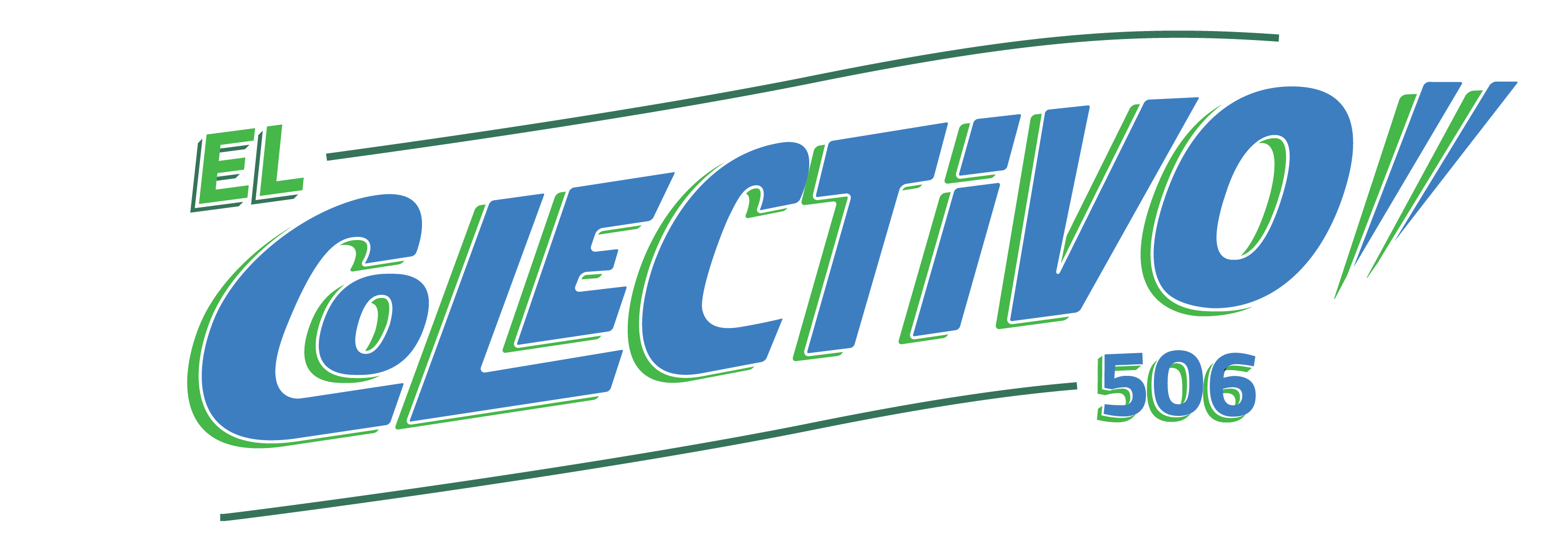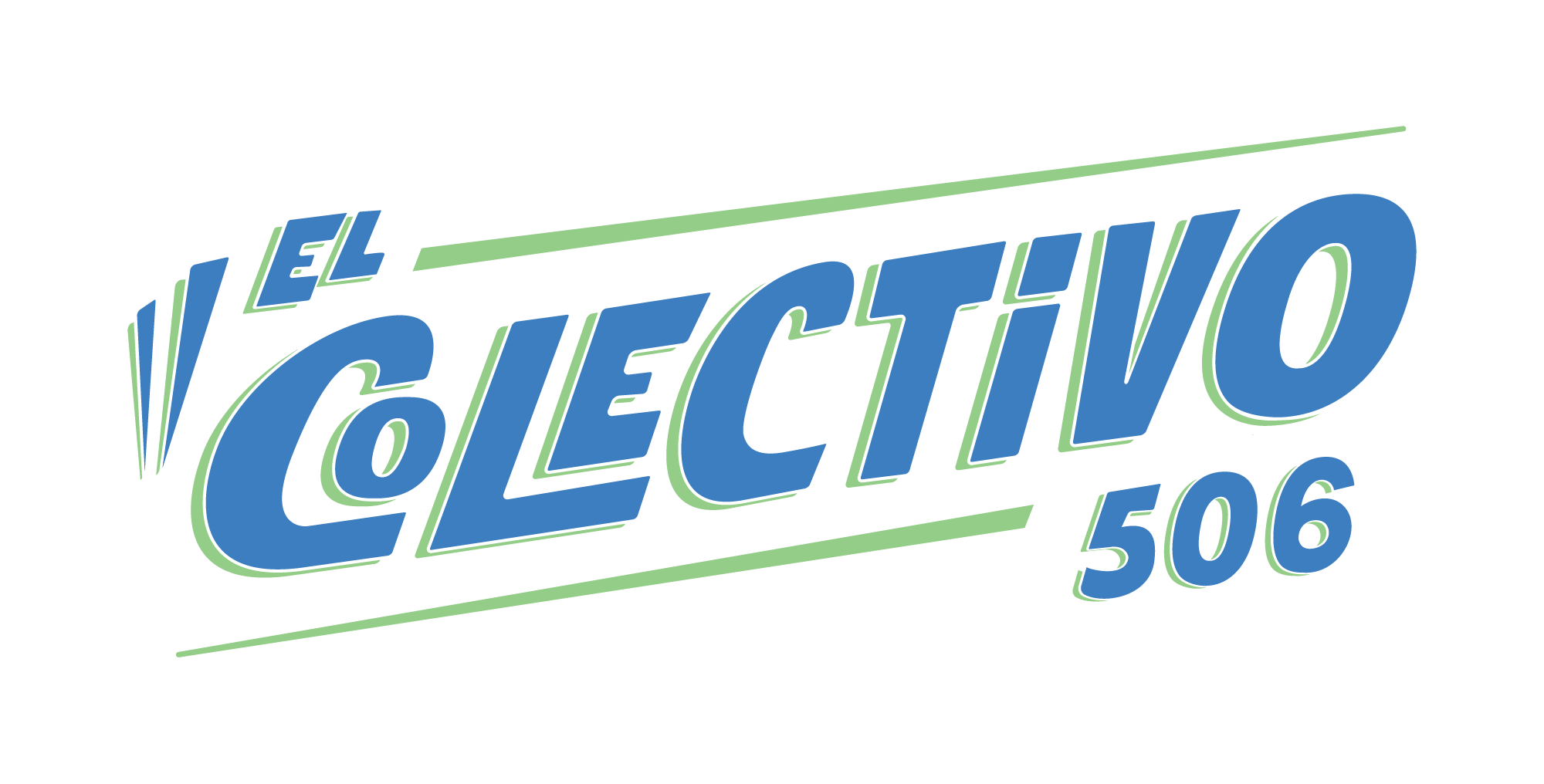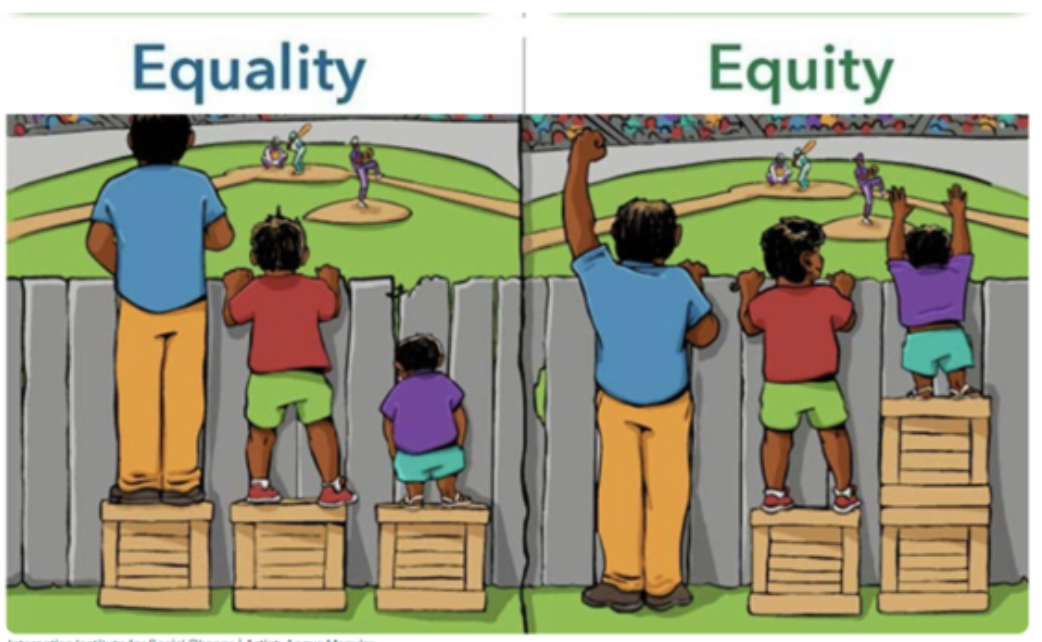Perhaps you have seen the illustration that explains the difference between “equality” and “equity.” There are multiple variations, but in the simplest version, the drawing labeled “equality” shows a man, a child, and a toddler, all trying to watch a baseball game over the fence. As they do so, each has the help of a single wooden crate.
Standing on his crate, the man is almost too tall for comfort, with the fence at waist height. Standing on her crate, the child can see perfectly. But the toddler is still staring straight at the wooden boards.
On the side labeled “equity,” however, the man has given his crate to the toddler. Now, all three people are perfectly positioned to watch the game.
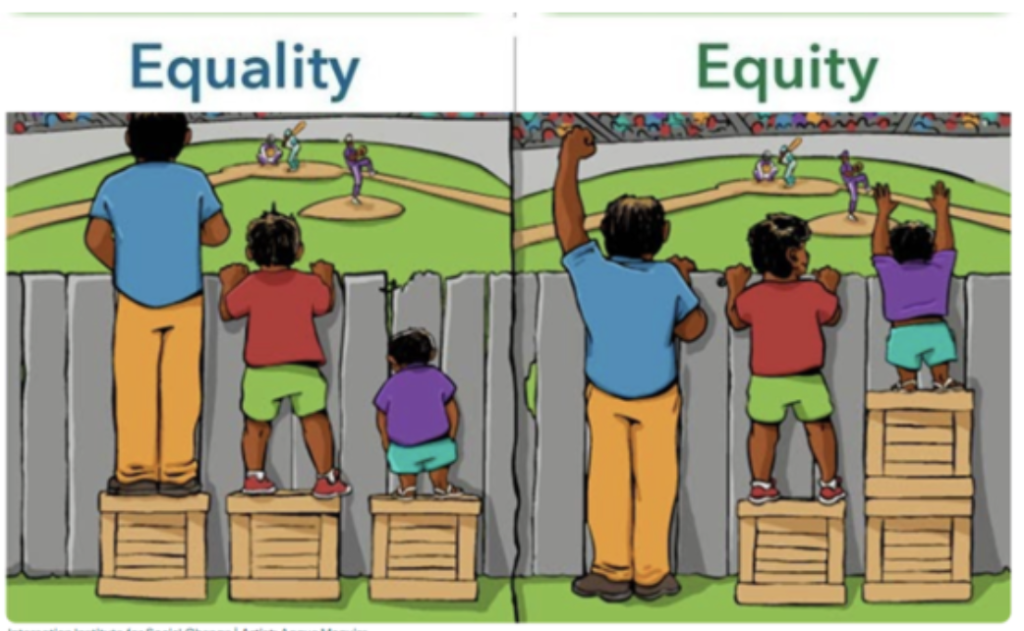
If you’ve seen this a thousand times, please skip down to the video—but if you, like us over the past few months, are interested in thinking through these definitions a little more, let’s go a little further. Over months of work with journalists all over our region, which we’ll explain in a minute, we’ve been reflecting on these ideas: equality means that everyone is given exactly the same conditions, while equity gives us different things depending on what we need.
Going a little deeper, gender equality is the treatment of women in a way that provides similar conditions to what men receive; imagine a university establishing gender-blind admissions to a university to ensure that all applicants are treated the same way. Gender equity, on the other hand, goes further to provide extra support where historical inequality, or simply natural differences between people, create a shortcoming. Maybe that same university, seeing that very few women apply in the first place, discovers that because women in their area are less likely to have access to information about higher learning from their families and teachers, decides to invest more recruitment efforts in reaching women.
The illustration below, created by Tony Ruth, adds another layer: justice, which occurs when the original unfairness (in this case, the tilt of the tree towards one person and away from the other) is corrected so that no one needs a taller ladder than anyone else. In the example we’ve been using, gender justice might look like high-school education so accessible and equitable that just as many women as men are applying to the university, which no longer needs to put any extra effort into recruiting women. The injustice has been corrected. Women don’t need that taller ladder anymore.
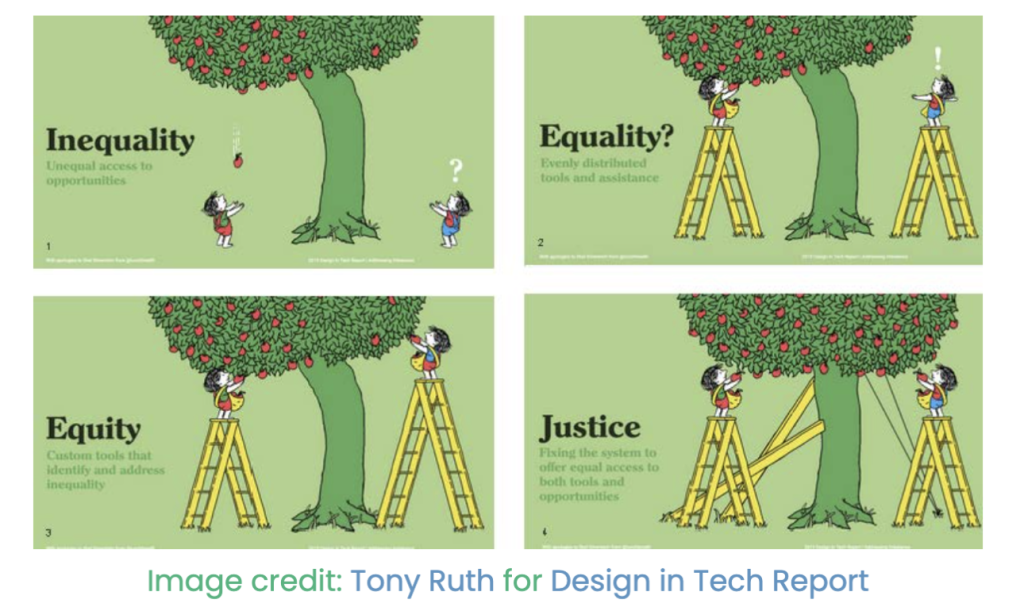
The world can seem like a dark place for all those of us living in the Americas today when it comes to all of these things: justice, equity, and equality. Right-wing leaders from the United States to Argentina, and in many places in between, are taking a chainsaw to very effective programs that have made improvements in the health, wellbeing, and safety of women and other vulnerable groups. Others have not yet taken drastic steps, but are clearly taking note.
It’s hard to watch. Harder to experience in the flesh. Terrifying, in fact.
It’s also not the whole story.
As you’ve seen if you follow us on social media, we’ve now launched the May edition of El Colectivo 506—one unlike any other we’ve done in more than four years of publication. Throughout the month, we’ll be sharing with you the work of 21 women journalists from nine countries, who, since the start of 2025, have been busy creating 16 stories of responses to gender inequity in their countries. These journalists have prepared for you longform narratives, podcasts, videos, and photo essays that capture the hard and often under recognized work of all kinds of people across Latin America—workers, caregivers, activists, community leaders, nonprofits, local governments, and national policymakers—to improve the lives of women and other vulnerable groups. These stories show what is possible when we provide not only equal conditions to all genders, but also provide the extra support that’s needed to make up for historical inequality and neglect.
What you haven’t seen on our social media is something else that has meant so much to us over these long months as waves of bad news have hit many countries around the world. That’s the community and support that is developing between these 19 journalists—21 including the two of us, Mónica and Katherine—as we talk about these stories. Our daily lives and problems are very different, but we share a desire to have a thoughtful conversation about those problems.
Because you’re reading this, we know that you do, too.
We want you to join that conversation this month. And we’re so eager to get these stories in front of as many readers, listeners, and viewers as possible. Many of us, far more than should ever be the case, are learning in real time how to sustain human rights protections when governments are openly hostile.
We believe it’s unbelievably urgent for all those who care about these issues, anywhere in the region to get to know how positive change is being achieved and sustained, even—or especially—when external conditions worsen.
If you can this month, please tune in to “Mission: Equity.” Tell us what you think of the stories. Let us know whether you see examples of equality, equity, and maybe even justice that inspire you or give you ideas for the challenges you’re facing where you live.
And if it’s been awhile since you’ve shared El Colectivo 506 with a friend, we ask that you please take a moment, right now, to think about someone who might like to be a part of this voyage with us this month. Send them this story, or our reel. Tag them on a post.
It would mean the world to us.
And we’ll see you out there on the route to equity—a route that will take us all over Latin America this month, providing information, energy, and hope.
